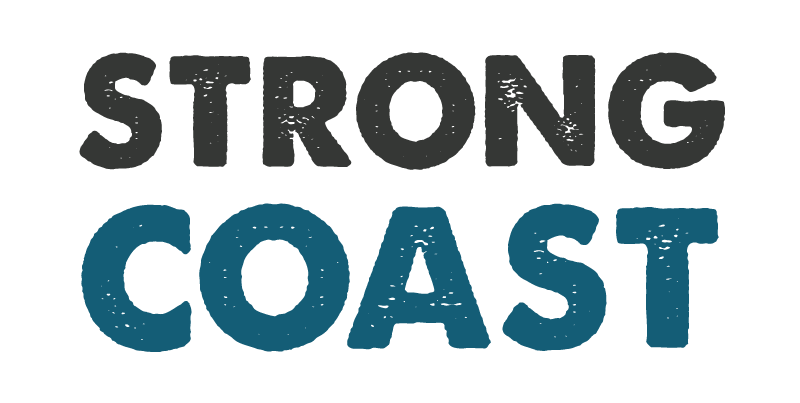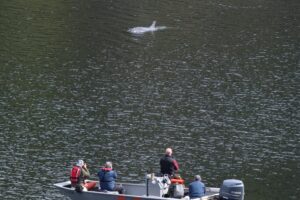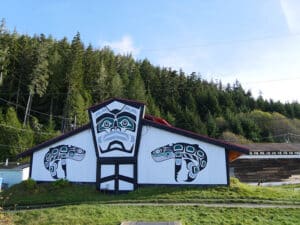Deep Water Recovery allowing toxic effluent to run off into marine environment, province says.
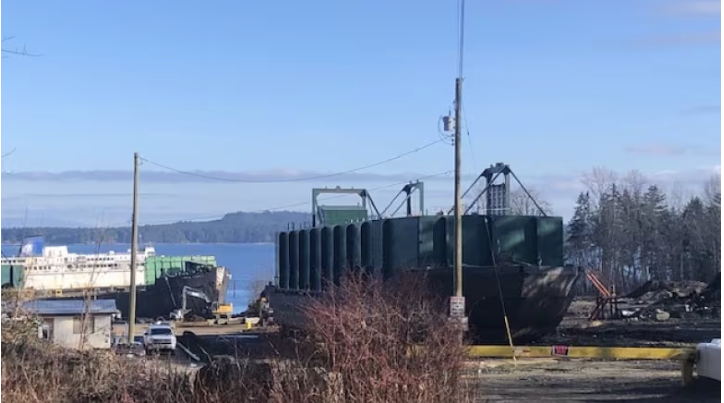
The company taking apart derelict vessels in Union Bay, B.C., has been hit with a pollution abatement order from the province.
Deep Water Recovery is illegally allowing toxic effluent to run off into Baynes Sound and the marine environment off Vancouver Island’s east coast, B.C.’s Ministry of Environment and Climate Change Strategy has found.
Discharges from the ship-breaking operations are collected in sump pits, which occasionally overflow with untreated effluent, the province says. Testing of that runoff confirmed high concentrations of pollutants, including copper, iron, zinc and cadmium.
“I am satisfied with reasonable grounds that a substance is causing pollution on or about lands occupied by Deep Water Recovery Ltd.,” wrote Jennifer Mayberry, director of operations and compliance for the environment ministry.
The ministry has ordered Deep Water Recovery to immediately stop the release of pollution and take additional steps to monitor and report discharges from the site, which is around 80 kilometres northwest of Nanaimo. If not, the company could face penalties of up to $300,000 in fines and six months of jail time, according to the order issued on March 15
The company can appeal the order within 30 days. Deep Water Recovery director Mark Jurisich did not respond to The Discourse’s request for an interview by publication time.
“We’ve been saying this for four years, that they are contaminating Baynes Sound,” said Union Bay resident Ashlee Gerlock. She says she is concerned for the health of her eight-year old son, whom she lives with.
The abatement order is good news, but it’s been a long fight, Gerlock said.
“It is good news. But at the same time, it’s four years of bad news,” she said.
Patchwork of responsibility
Generally, the federal government manages what happens offshore, including the transport of vessels to and from the site. It also has responsibilities related to fish habitat in the tidal waters.
The province manages the company’s foreshore lease, which covers activities in the water and below the high tide mark.
The land higher up is privately owned and governed by the land-use rules of the Comox Valley Regional District. The Indigenous land and water rights of the K’ómoks First Nation overlay all of this.
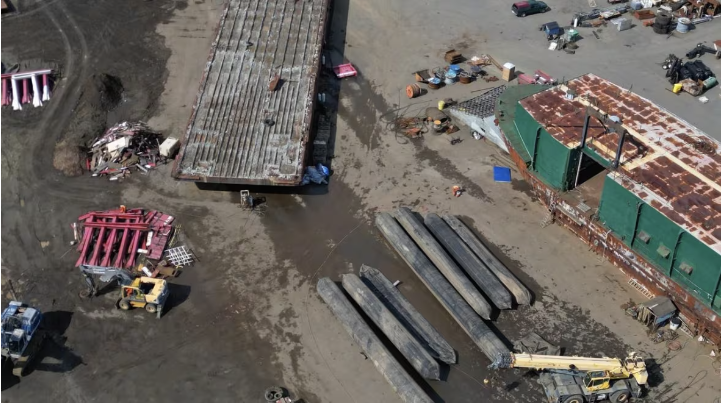
These jurisdictions have all been involved with policing Deep Water Recovery’s activities and responding to community members’ concerns since the company transformed the site from a log sort to a ship recycling facility about four years ago.
On Feb. 20, B.C. ministers sent a letter to the federal government urging more action to regulate and respond to concerns regarding the site.
The ministers said the provincial government is doing what it can to enforce regulations and respond to concerns in areas under its jurisdiction, but they said they “remain very concerned that Canada is not actively regulating and communicating your regulatory actions in the marine environment.”
“In a multi-jurisdictional framework such as this, it is critical that municipal, provincial, and federal agencies work together to ensure that the interests of the public, First Nations, and the environment are protected,” the letter said.
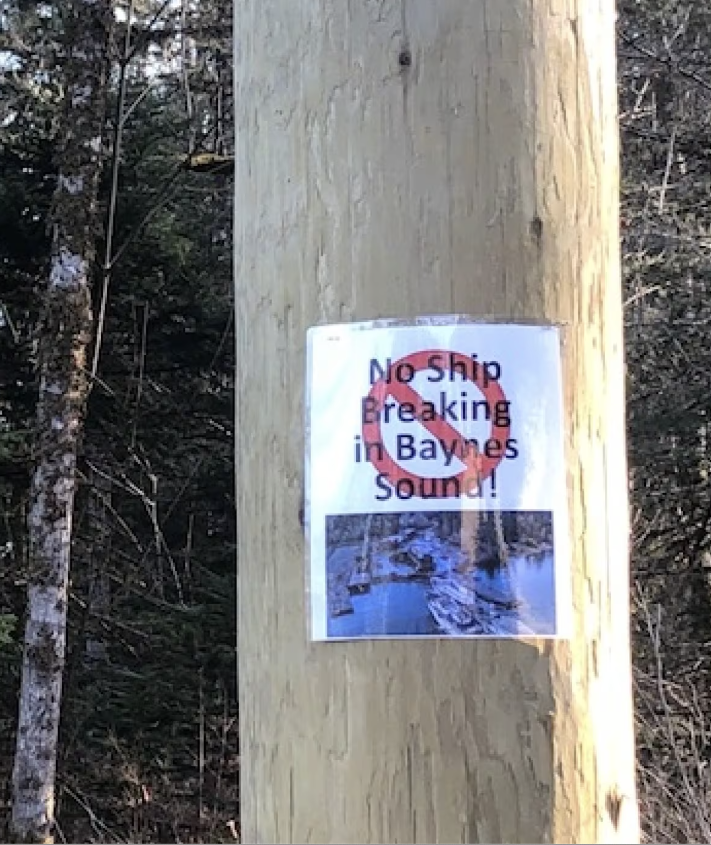
Canada has no regulations specific to ship-breaking.
Union Bay resident Marilynne Manning says that front of mind for her is action and communication from Fisheries and Oceans Canada (DFO).
“What bothers me the most is the absence of the DFO,” she said, adding that she is hoping to see them come to the table on this issue.
Craig Macartney with the DFO told The Discourse by email that “our assessments did not find any pollution or hazard, either under the Wrecked, Abandoned or Hazardous Vessels Act or the Canada Shipping Act.”
He did not clarify which assessments.
Macartney said the Canadian Coast Guard (CCG) “continues to work with federal and provincial agencies that have related jurisdictions and will intervene if the situation changes and warrants intervention by the CCG,” even though the Coast Guard does not have jurisdiction over ship dismantling activities that occur on land.
Documents obtained through a freedom of information request indicate that the DFO has taken some enforcement action at the site in the past.
In 2022, DFO officials determined that Deep Water Recovery harmed fish habitat by mooring vessels and operating machines in the intertidal water, and ordered the company to immediately remove the three vessels grounded on the shore.
At a follow-up visit a year later, it found only one of the vessels had been fully brought up on shore.
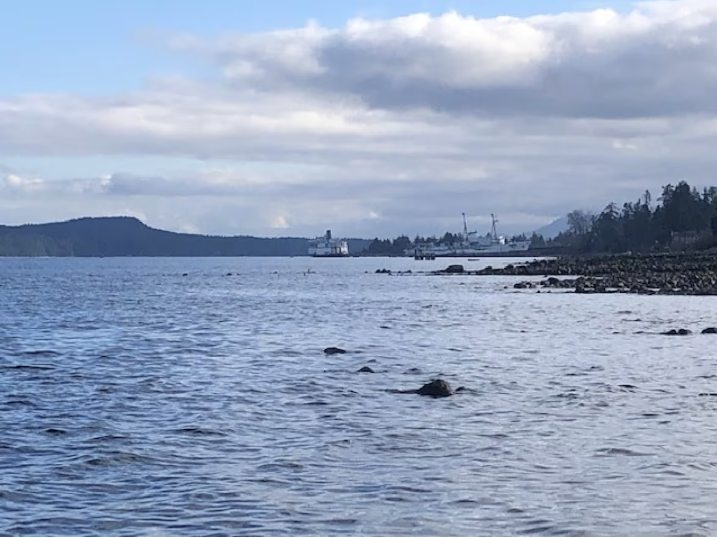
A spokesperson with Environment and Climate Change Canada (ECCC) told The Discourse that the ministry has been regularly monitoring incidents surrounding the ship-breaking facility.
The Comox Valley Regional District says Deep Water Recovery’s ship-breaking activities on land are not compliant with its land use bylaws and has asked the B.C. Supreme Court to force the company to stop dismantling ships at the site.
Deep Water Recovery denies the claim, and the matter is ongoing.
How did the vessels get there?
The provincial ministers’ letter called on the federal government’s help to stop more vessels from arriving at the site. The CCG and Transport Canada would have been responsible for authorizing the towing of vessels already at the site, they wrote.
One of those vessels is the Miller Freeman, an end-of-life U.S. fisheries and oceanography research vessel that caught fire in Seattle in 2013. After being spotted in various locations along the Fraser River between 2017 and 2019, the vessel ended up at Deep Water Recovery alongside the Surveyor, another former American research ship.
During the Miller Freeman auction sale, the services administration confirmed that asbestos was in various parts of the vessel, including insulation, floor tiles and wallboard.
The services administration warned to “not release fibres by cutting, crushing, sanding, or otherwise altering this property.”
Drone footage shows the Miller Freeman has already been partially dismantled.
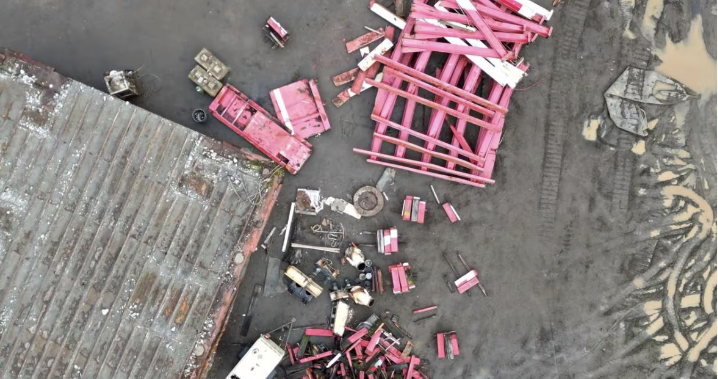
Sau Sau Liu with Transport Canada said vessels towed for recycling are typically deregistered and that “the owner was not required to obtain Transport Canada approval to tow vessels to the site.”
She confirmed the Miller Freeman and Surveyor were deregistered, meaning they no longer fly any country’s flag.
“A deregistered vessel is not a Canadian vessel under the Canada Shipping Act, 2001, which limits Transport Canada’s regulatory authority,” she said, and added that “vessels do not have to declare to Transport Canada that they are being imported for recycling.”
Liu added that in some circumstances, federal legislation can apply.
But Gerlock said more needs to be done, and urgently.
“[Baynes Sound] needs our protection, our federal government says it needs to be protected. And then they go and allow this.
Story by Madeline Dunnett, Local Journalism Initiative Reporter / CBC
